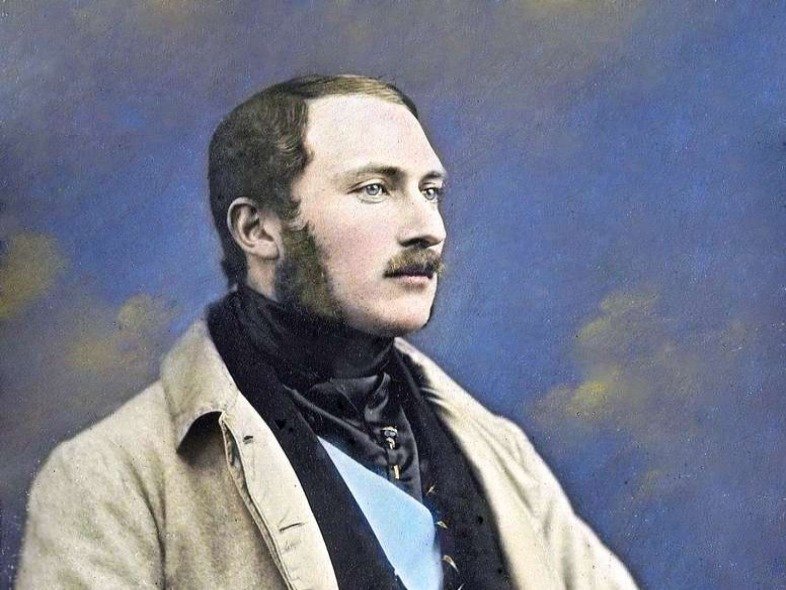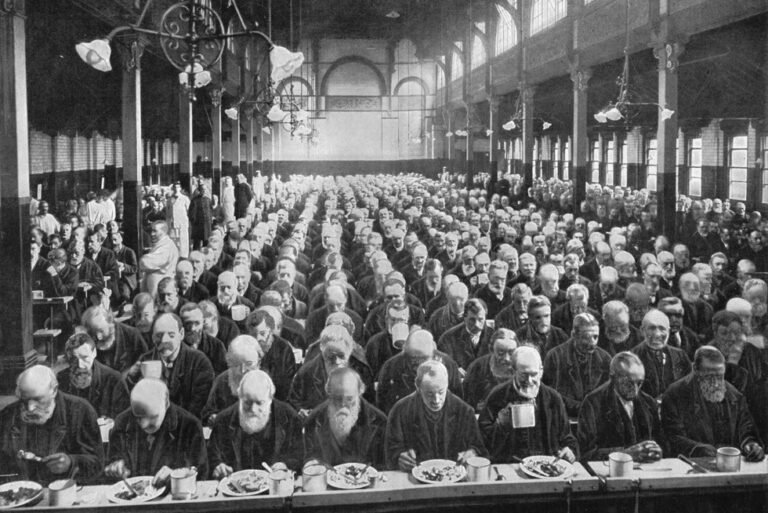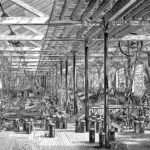Prince Albert, the husband of Queen Victoria, is a historical figure worth exploring. Their marriage had a profound impact on British history and culture.
Prince Albert was not just a royal consort. He was a man of vision and intellect. Born in 1819, he married Queen Victoria in 1840. This union brought significant changes to the monarchy. Albert influenced arts, science, and industry in Britain.
His role extended beyond the palace walls. He championed public welfare and education reforms. Understanding Prince Albert’s contributions helps us see how he shaped modern Britain. This blog will delve into his life and legacy, offering insights into his lasting impact.
Early Life
Prince Albert, the husband of Queen Victoria, had an intriguing early life. His formative years greatly influenced his character and future contributions to the British monarchy. This section delves into the significant aspects of his childhood and education.
Childhood Years
Prince Albert was born on August 26, 1819, in Schloss Rosenau, Germany. He was the second son of Ernest I, Duke of Saxe-Coburg and Gotha, and Louise of Saxe-Gotha-Altenburg. Albert’s early childhood was marked by the separation of his parents. His father and mother divorced when he was young, which deeply affected him.
Albert and his brother, Ernest, were raised under the strict supervision of their father. They spent much of their childhood at the family’s various residences, including the Coburg and Gotha estates. The brothers shared a close bond, which helped them endure the turbulence of their early years.
Education And Interests
Albert received a comprehensive education, which was typical for royalty of his time. His tutors instilled in him a love for learning and a sense of duty. He excelled in languages, history, and the arts. His education was not just academic; it also included physical training and moral lessons.
Albert developed a keen interest in music, science, and the arts. He was particularly talented in playing the piano and enjoyed composing music. His intellectual pursuits and artistic talents would later endear him to Queen Victoria and influence his role in the monarchy.

Credit: simple.wikipedia.org
Albert’s education also focused on preparing him for a possible future role as a consort. This included learning about governance, politics, and international relations. His well-rounded education made him a cultured and knowledgeable individual, ready to take on significant responsibilities.
Marriage To Queen Victoria
Prince Albert and Queen Victoria shared a deep bond. Their marriage was a significant event in British history. They first met when they were young. The connection was almost immediate. They saw each other again in 1839. This meeting confirmed their affection. Soon after, they were engaged.
:max_bytes(150000):strip_icc()/QueenVictoriaandPrinceAlbert1-48e402ea4cd34371a98b01a6d39d8b9e.jpg)
Credit: www.thoughtco.com
Royal Wedding
Their wedding took place on February 10, 1840. The ceremony was held at the Chapel Royal, St. James’s Palace. It was a grand event attended by many. Victoria wore a white dress, setting a new trend. The public celebrated the union with joy. Albert became the Prince Consort. His role was supportive yet crucial.
Family Life
Victoria and Albert had a large family. They had nine children. They raised their children with love and care. Family life was important to them. They enjoyed spending time together. Albert played a key role in their education. He wanted them to be well-rounded individuals.
Their family values influenced many. They balanced royal duties with family time. Their home life was an example to others. Albert’s dedication to his family was evident. Victoria often praised his parenting skills. Their marriage remained strong throughout their lives.
Role As Consort
Prince Albert supported Queen Victoria in her royal duties, contributing significantly to British society. His influence extended to arts, science, and industry. As consort, he played a crucial role in modernizing the monarchy.
The role of Prince Albert as consort to Queen Victoria was multifaceted and vital to the monarchy’s stability. As consort, Albert was not just a supportive husband; he took on significant responsibilities that shaped the era.
Challenges Faced
Albert faced numerous challenges in his role. He struggled with being accepted by the British public and the political establishment.
Many viewed him as an outsider, given his German roots.
Despite these obstacles, he worked tirelessly to prove his dedication to the country.
Support To The Queen
Albert provided unwavering support to Queen Victoria. He acted as her advisor and confidant in both personal and political matters.
His insights were invaluable, especially during times of political unrest.
Moreover, he championed various causes, from education to technological advancements, which significantly benefited the nation.
Prince Albert’s role as consort was demanding, yet his contributions were profound. How do you think his challenges and support shaped the monarchy?
Political Influence
Prince Albert, Queen Victoria’s husband, played a significant role in British politics. He influenced many reforms and policies during her reign.
Prince Albert, the husband of Queen Victoria, was not just a royal consort. He wielded significant political influence during his time. His advisory role and major contributions left a lasting impact on the British monarchy and governance. Let’s delve into how he achieved this.
Advisory Role
Prince Albert played a crucial advisory role to Queen Victoria. He was more than a supportive husband; he was her confidant and political advisor. His insights were vital in shaping her decisions.
One fascinating aspect of their relationship was their collaborative approach to governance. Imagine discussing state matters over breakfast! Albert’s keen interest in various subjects, including science, technology, and education, added depth to his advice.
You might wonder how this dynamic affected the monarchy. Well, their partnership was a game-changer. Albert’s influence helped Victoria navigate the complexities of her reign, providing stability in turbulent times.
Major Contributions
Albert’s contributions were far-reaching. He championed various causes that had long-term benefits for the nation.
Education was one of his primary focuses. He believed in the power of knowledge and worked tirelessly to improve educational standards. His efforts led to the establishment of numerous institutions.
Albert also had a profound impact on the arts. He was instrumental in organizing the Great Exhibition of 1851. This event not only showcased Britain’s industrial prowess but also fostered international trade and cultural exchange.
His influence extended to social reforms as well. Albert advocated for better working conditions and was a proponent of modernizing the nation’s infrastructure.
Do you think these contributions would have been possible without his unique position and determination?
As you reflect on Prince Albert’s political influence, consider the importance of advisory roles and the power of contributions in shaping a better future. His legacy is a testament to the impact one individual can have on a nation’s progress.
Cultural Contributions
Prince Albert, the husband of Queen Victoria, was more than just a royal figure. His cultural contributions have left an indelible mark on British society. Let’s delve into two key areas where his impact was profound: his patronage of the arts and his promotion of science.
Patron Of The Arts
Prince Albert was a passionate supporter of the arts. He believed that art could enrich lives and enhance society. His efforts led to the establishment of several cultural institutions.
One of his notable achievements was the creation of the Victoria and Albert Museum. This museum houses a vast collection of art and design artifacts. It stands as a testament to his dedication to preserving and promoting art.
Albert also played a crucial role in organizing the Great Exhibition of 1851. This event showcased the finest art and industrial achievements from around the world. It was a milestone in cultural exchange and innovation.
Promotion Of Science
Prince Albert was equally passionate about science. He believed that scientific advancements were key to progress. His vision led to significant developments in the scientific community.
He was instrumental in the founding of the Royal Albert Hall. This venue became a hub for scientific lectures and exhibitions. It fostered a culture of learning and discovery.
Albert’s support extended to educational institutions. He advocated for improved scientific education in schools and universities. His efforts helped shape a generation of thinkers and innovators.
As you reflect on Prince Albert’s contributions, consider this: how can you support the arts and sciences in your community? His legacy reminds us that individual efforts can create lasting impact.
Social Reforms
Prince Albert, Queen Victoria’s husband, championed social reforms. His efforts improved education, housing, and working conditions in Britain.
Prince Albert, the Husband of Queen Victoria, was not just a royal figurehead but a proactive reformer. His dedication to social reforms significantly impacted the British society, leaving a legacy that is still felt today. Let’s delve into two key areas where he made substantial contributions: education and public welfare.
Education Initiatives
Prince Albert believed in the power of education to transform society. He championed the establishment of the Royal College of Chemistry, which eventually became part of Imperial College London. This initiative aimed to advance scientific knowledge and innovation.
He also supported the Great Exhibition of 1851, which showcased the latest advancements in technology and industry. The profits from this event funded educational institutions like the Victoria and Albert Museum. Such efforts underscored his commitment to making education accessible and practical.
Have you ever wondered how different our education system would be without such initiatives? Prince Albert’s vision was to create a knowledgeable society capable of driving progress and innovation.
Public Welfare
Prince Albert was deeply concerned about the well-being of the public. He pushed for housing reforms to improve living conditions for the working class. His advocacy led to the establishment of model housing projects that set higher standards for hygiene and comfort.
He also supported the Public Health Act of 1848, which aimed to tackle the spread of diseases in urban areas. This act laid the groundwork for modern public health systems. Imagine living in a time when basic sanitation wasn’t a given; Albert’s efforts brought about essential changes.
Through these reforms, Prince Albert showed that leadership isn’t just about holding a title. It’s about making tangible improvements in people’s lives. What changes do you think we could advocate for today that would have such lasting impacts?
By addressing both education and public welfare, Prince Albert’s social reforms were a testament to his forward-thinking and compassionate leadership. How can we draw inspiration from his legacy to address today’s societal challenges?
The Great Exhibition
The Great Exhibition of 1851 was a significant event in British history. Prince Albert, the husband of Queen Victoria, played a crucial role in its success. The exhibition showcased innovations from around the world. It aimed to celebrate art, industry, and culture.
Vision And Planning
Prince Albert had a grand vision for the event. He wanted to promote international cooperation. He also aimed to highlight British achievements. Albert gathered support from various sectors. This included artists, scientists, and businessmen.
The planning was meticulous. A special committee handled the logistics. They chose Hyde Park as the location. A design competition was held for the exhibition building. Joseph Paxton’s crystal palace design won. This structure became an icon of the event.
Legacy Of The Event
The Great Exhibition left a lasting impact. It inspired future world fairs. People saw the potential of international collaboration. The event also boosted British pride. It showcased the nation’s industrial strength.
The proceeds funded new institutions. These included museums and educational facilities. The Science Museum and the Natural History Museum are examples. The exhibition’s success cemented Prince Albert’s legacy. He became a symbol of progress and innovation.

Credit: www.britannica.com
Later Years And Death
Prince Albert, the beloved husband of Queen Victoria, faced many challenges in his later years. His health began to decline, affecting both his personal life and his role as a royal consort. Despite his struggles, he remained a dedicated partner and father until his untimely death.
Health Decline
Albert’s health began to worsen in the late 1850s. He suffered from chronic stomach issues and bouts of depression. His tireless work ethic took a toll on his body. Frequent travel and royal duties added to his stress. In 1861, he contracted typhoid fever. The illness weakened him significantly.
Impact On Queen Victoria
Albert’s declining health deeply affected Queen Victoria. She worried constantly about his well-being. His death in December 1861 devastated her. Victoria entered a long period of mourning. She wore black for the rest of her life. Albert’s passing left a void in her heart. His legacy, however, lived on through their children and his numerous contributions to British society.
Legacy
Prince Albert, the husband of Queen Victoria, left a lasting legacy. His impact is visible across the United Kingdom and beyond. Albert championed education, science, and the arts. His efforts have shaped modern Britain. This section explores his enduring influence.
Monuments And Memorials
Many monuments honor Prince Albert’s contributions. The Albert Memorial in London is a prime example. It stands in Kensington Gardens, near the Royal Albert Hall. The memorial celebrates his love for the arts and sciences.
Another notable tribute is the Albert Bridge. This beautiful structure spans the River Thames. It connects Chelsea and Battersea. Each monument reflects his lasting impact on British culture.
Historical Perspectives
Historians view Prince Albert as a visionary. He played a key role in the Great Exhibition of 1851. This event showcased innovations and promoted international trade. His influence extended to education reforms. He supported the establishment of the Royal College of Music and other institutions.
Prince Albert’s legacy also includes his work in social issues. He advocated for better housing and sanitation. His efforts improved living conditions for many. Today, his contributions are still remembered and celebrated.
FAQs
What Happened To Prince Albert, Husband Of Queen Victoria?
Prince Albert, husband of Queen Victoria, died on December 14, 1861. He suffered from typhoid fever.
Was Prince Albert A Good Husband To Queen Victoria?
Yes, Prince Albert was a supportive and loving husband to Queen Victoria. He contributed significantly to her reign and their family life.
Was Prince Albert Shot Protecting Queen Victoria?
No, Prince Albert was not shot protecting Queen Victoria. He died of typhoid fever in 1861.
How Old Was Victoria When Albert Died?
Victoria was 42 years old when Albert died. He passed away on December 14, 1861.
Conclusion
Prince Albert played a vital role in Queen Victoria’s reign. His efforts shaped modern Britain. Their partnership symbolized love and dedication. Albert’s influence on social reforms remains significant. He championed education and innovation. His legacy endures through cultural advancements. Remember Albert’s contributions and his unwavering support for Victoria.
Their story inspires many today. Understanding their impact offers insight into history. Reflect on Prince Albert’s remarkable journey. Appreciate his lasting imprint on society.








